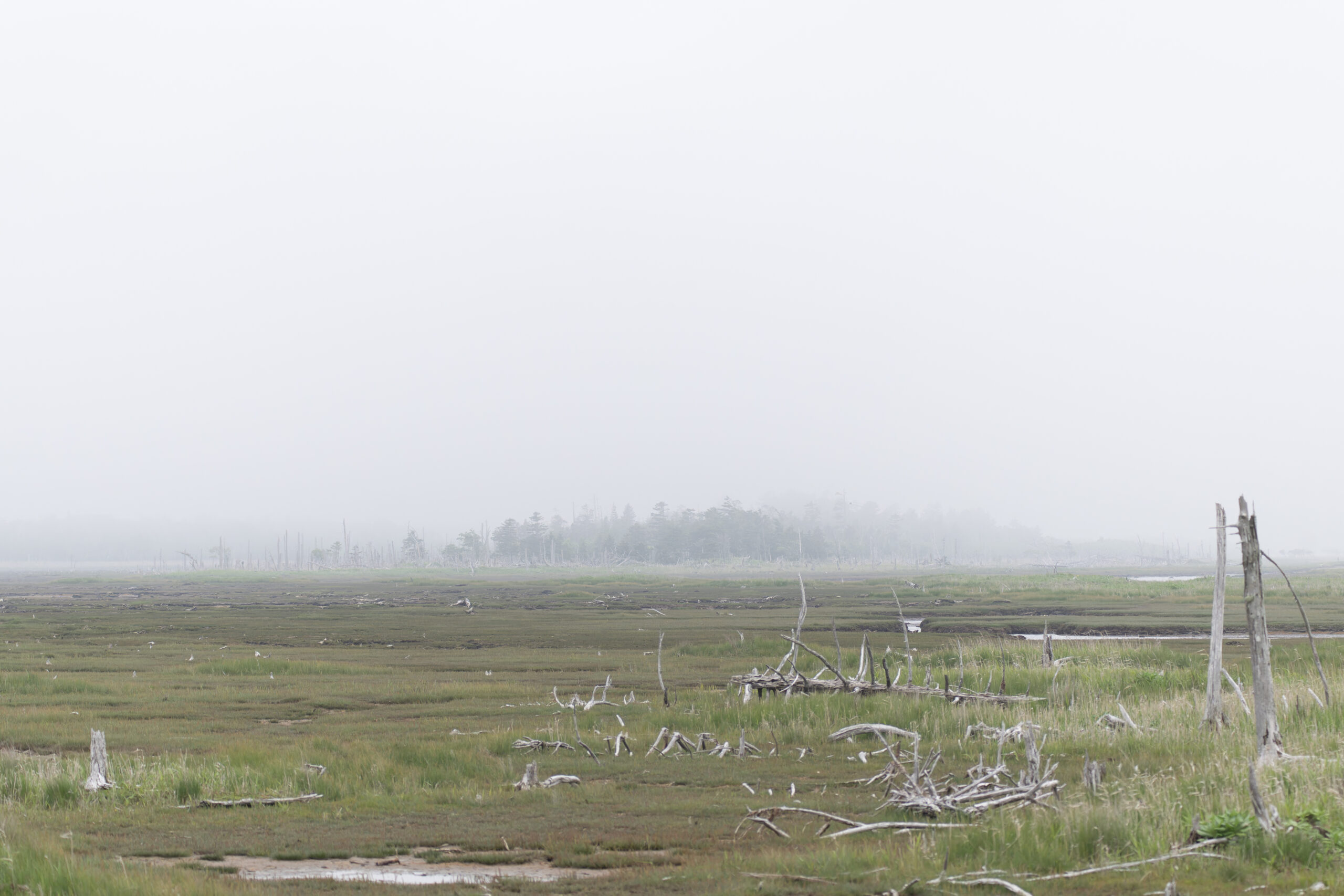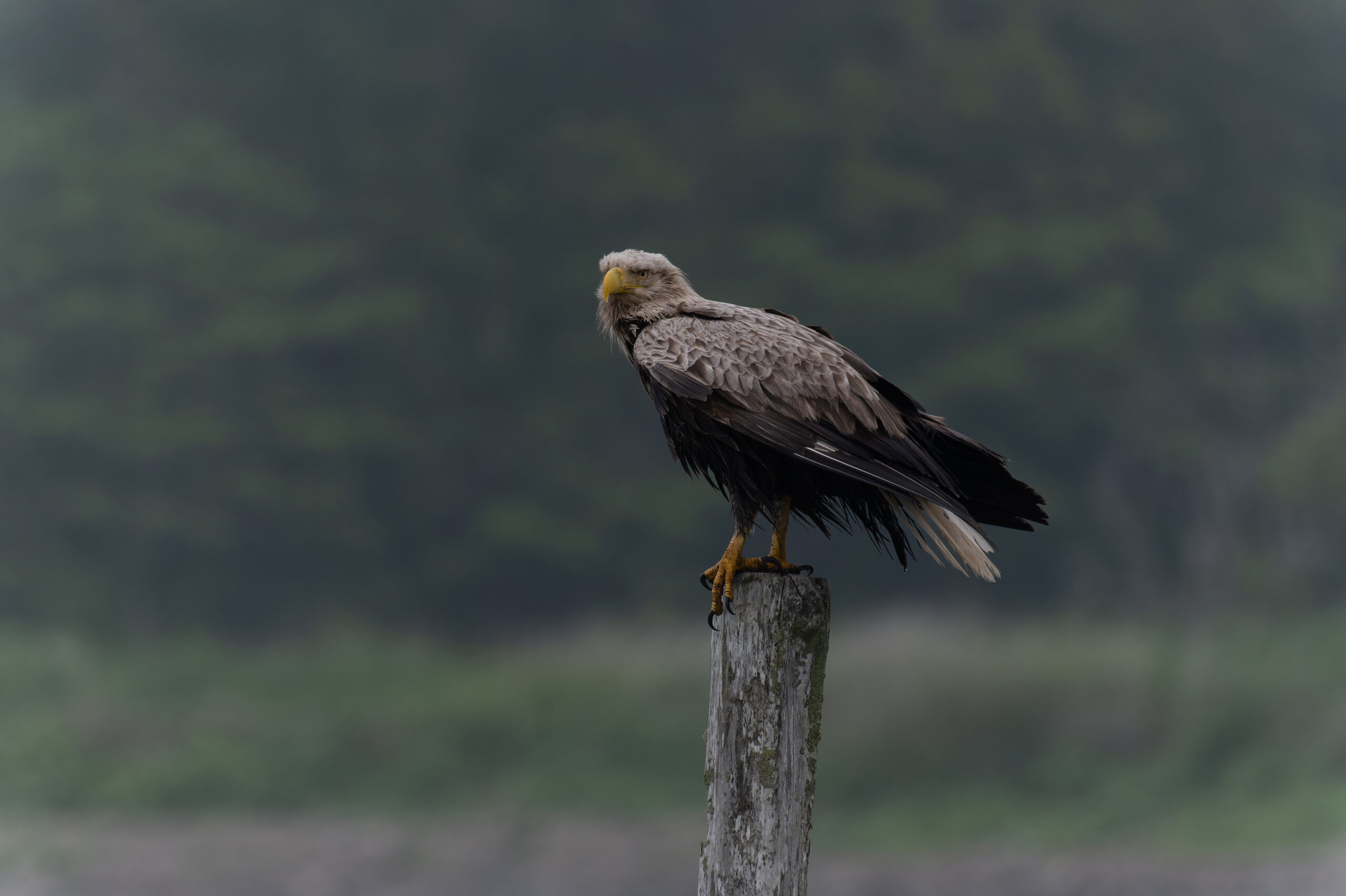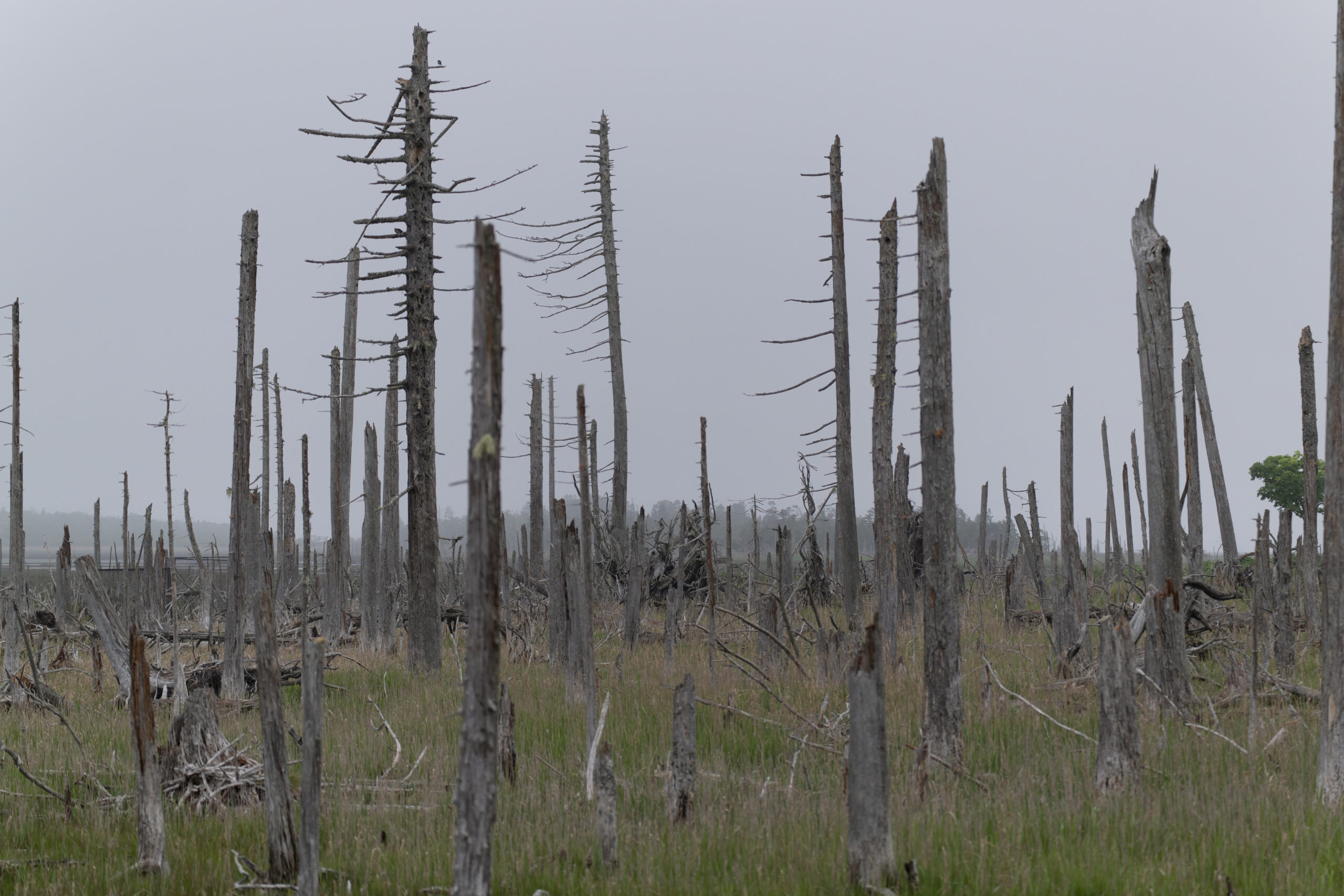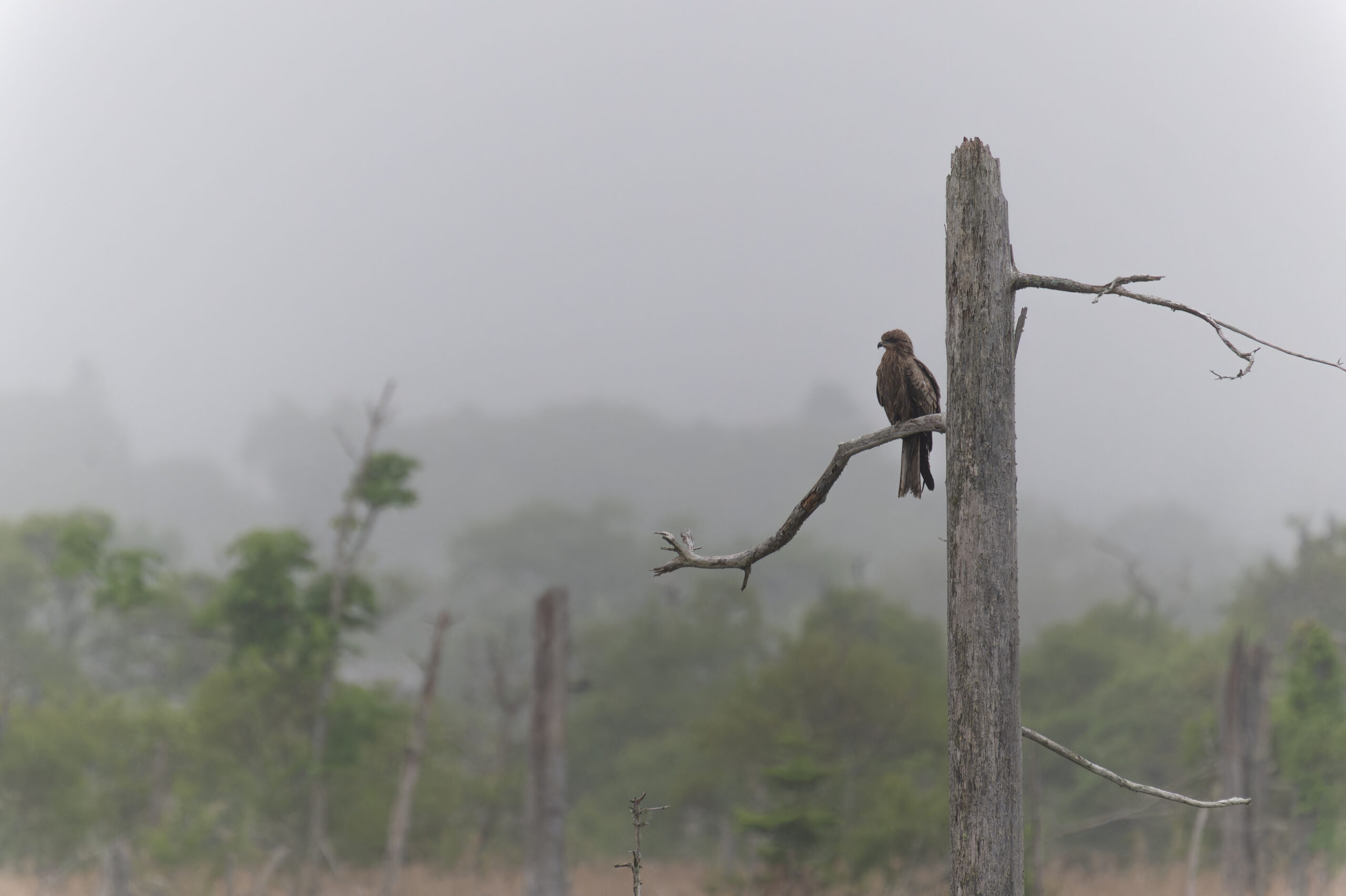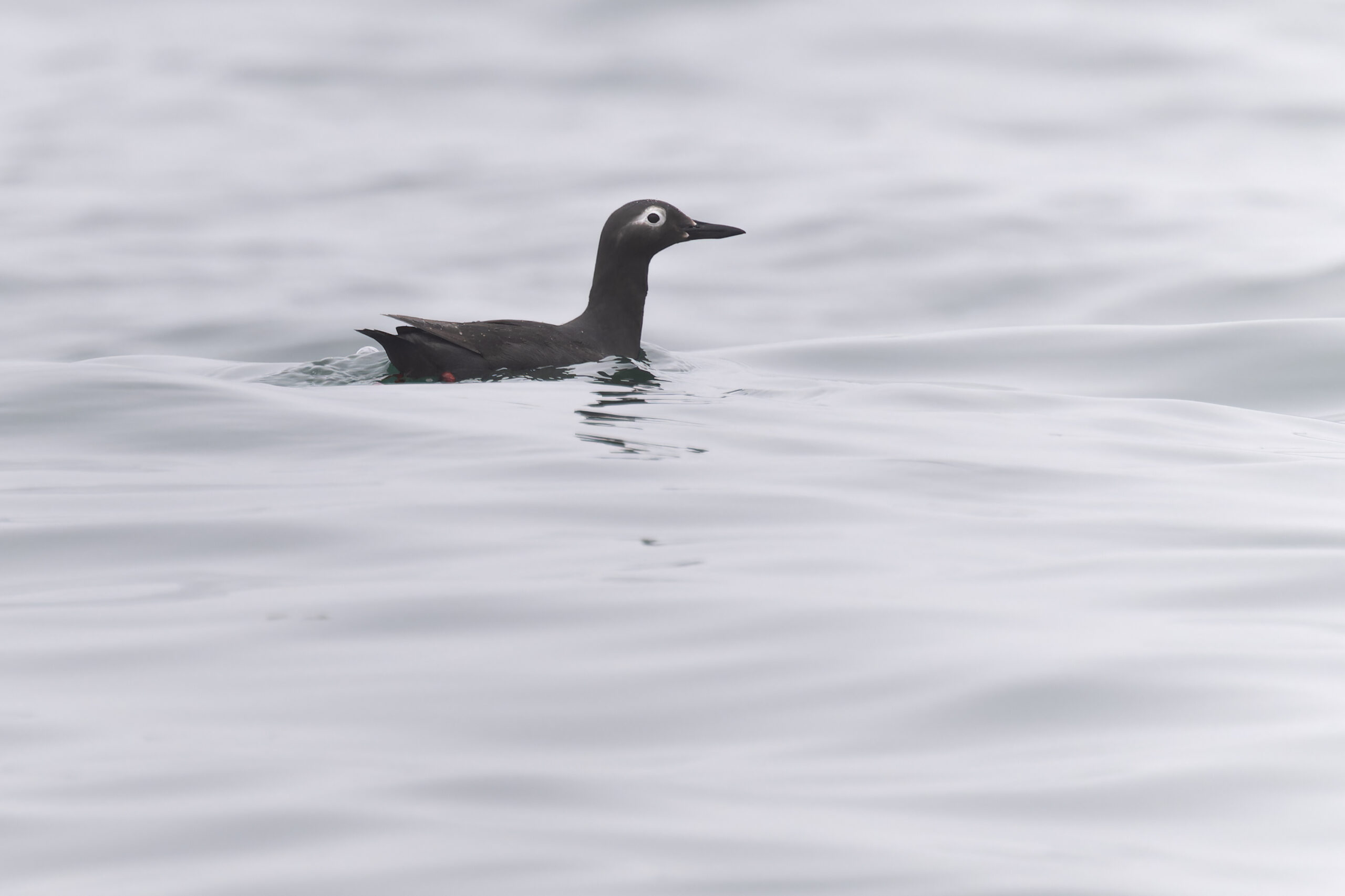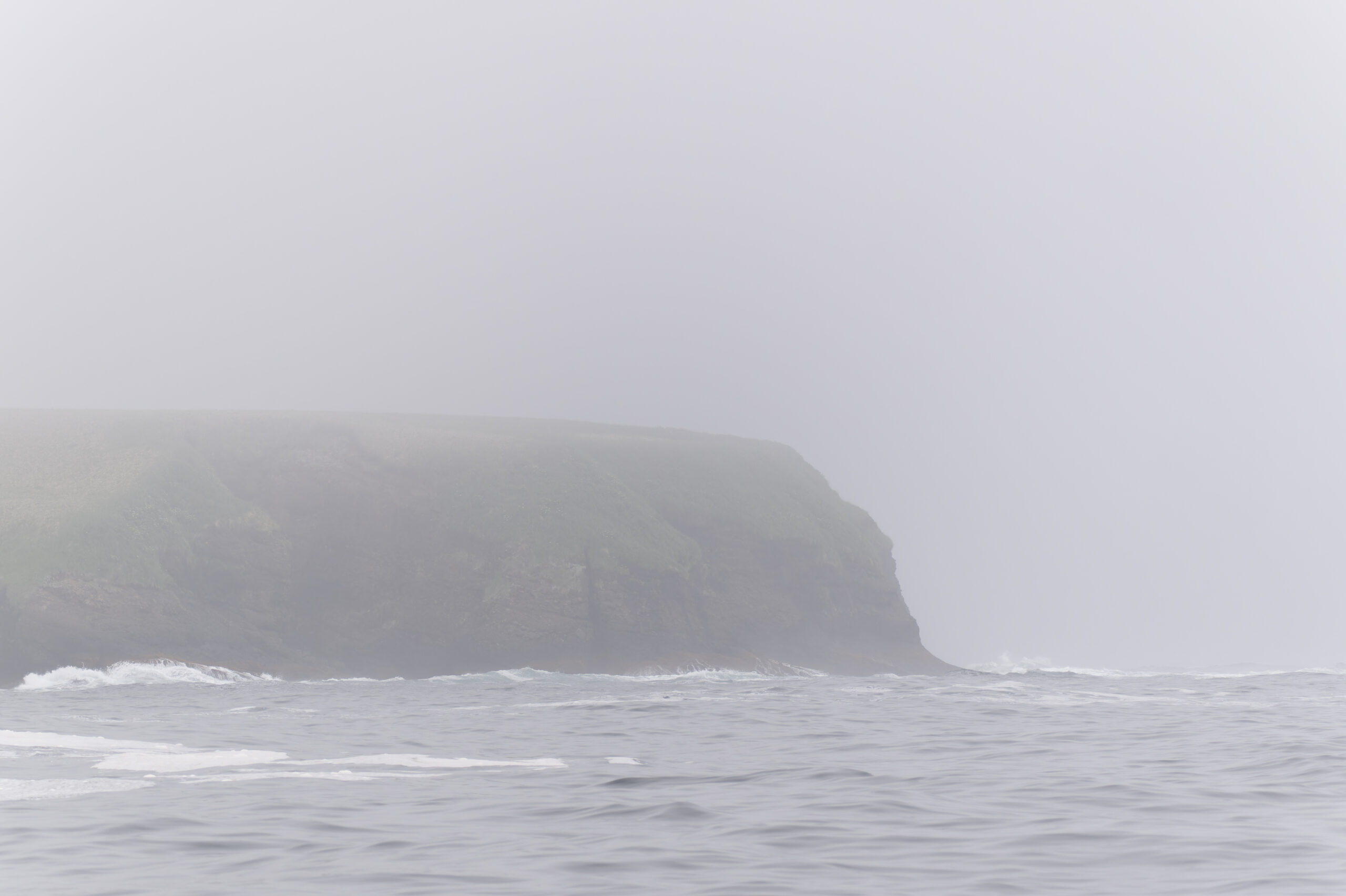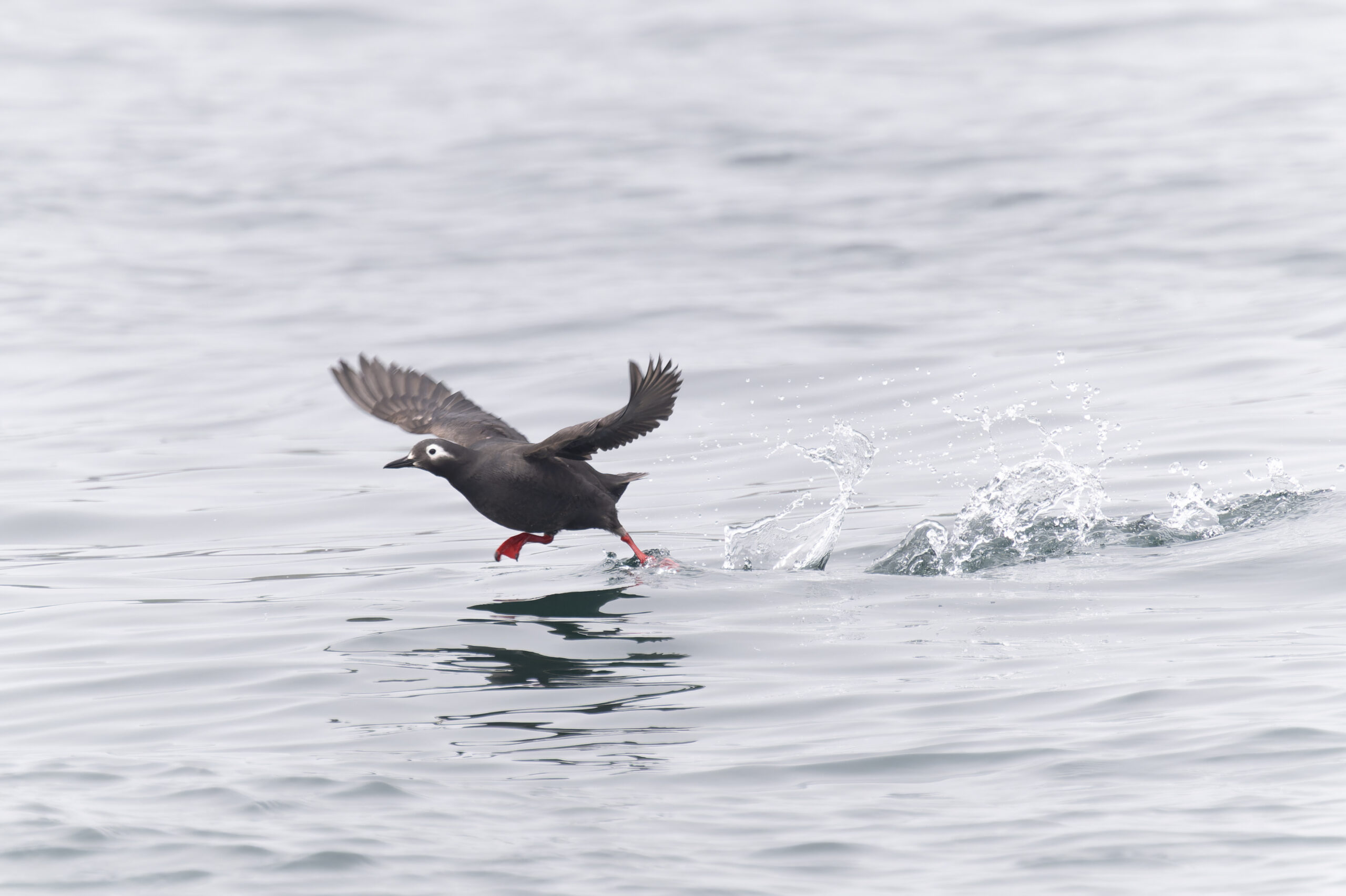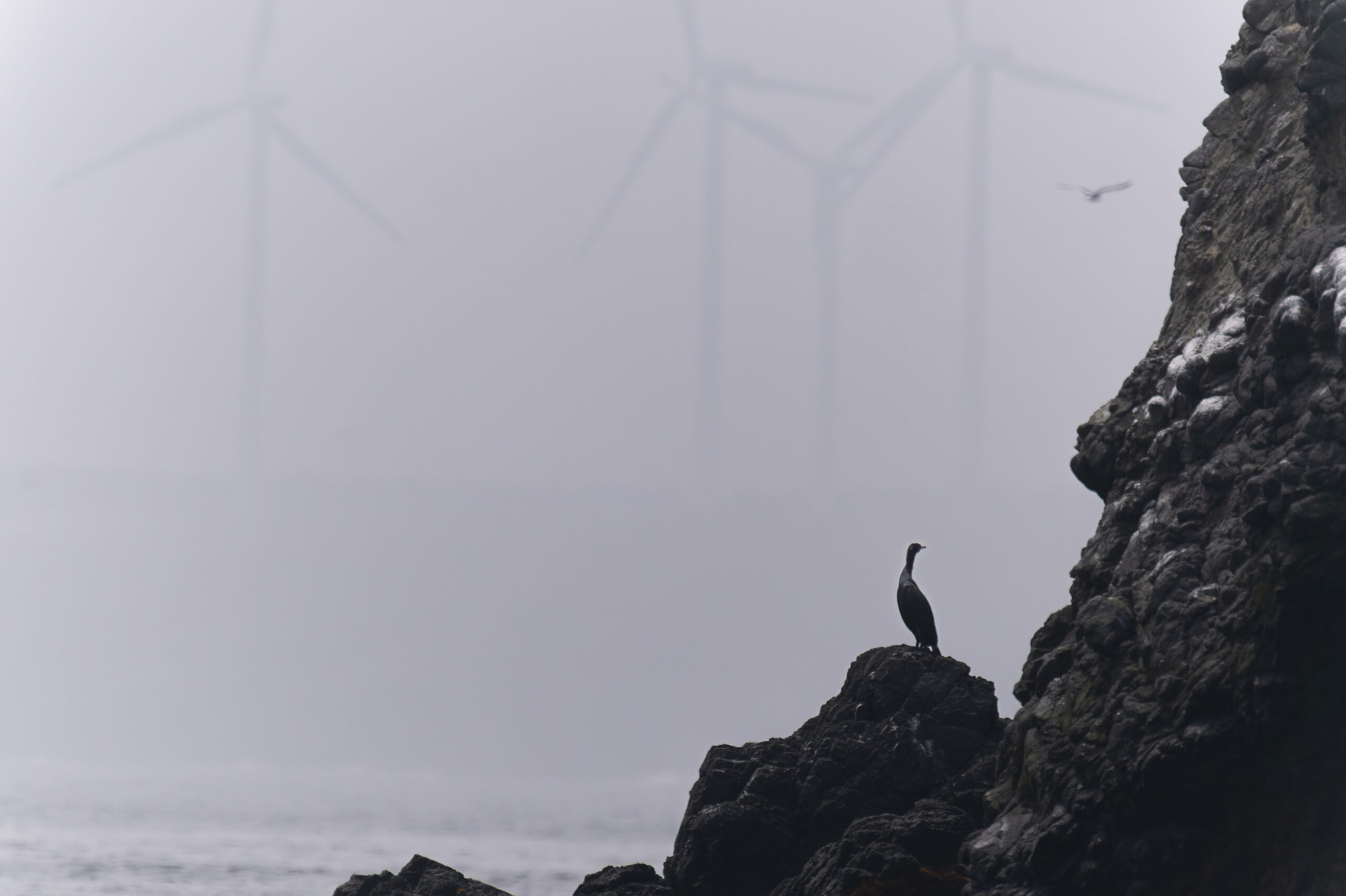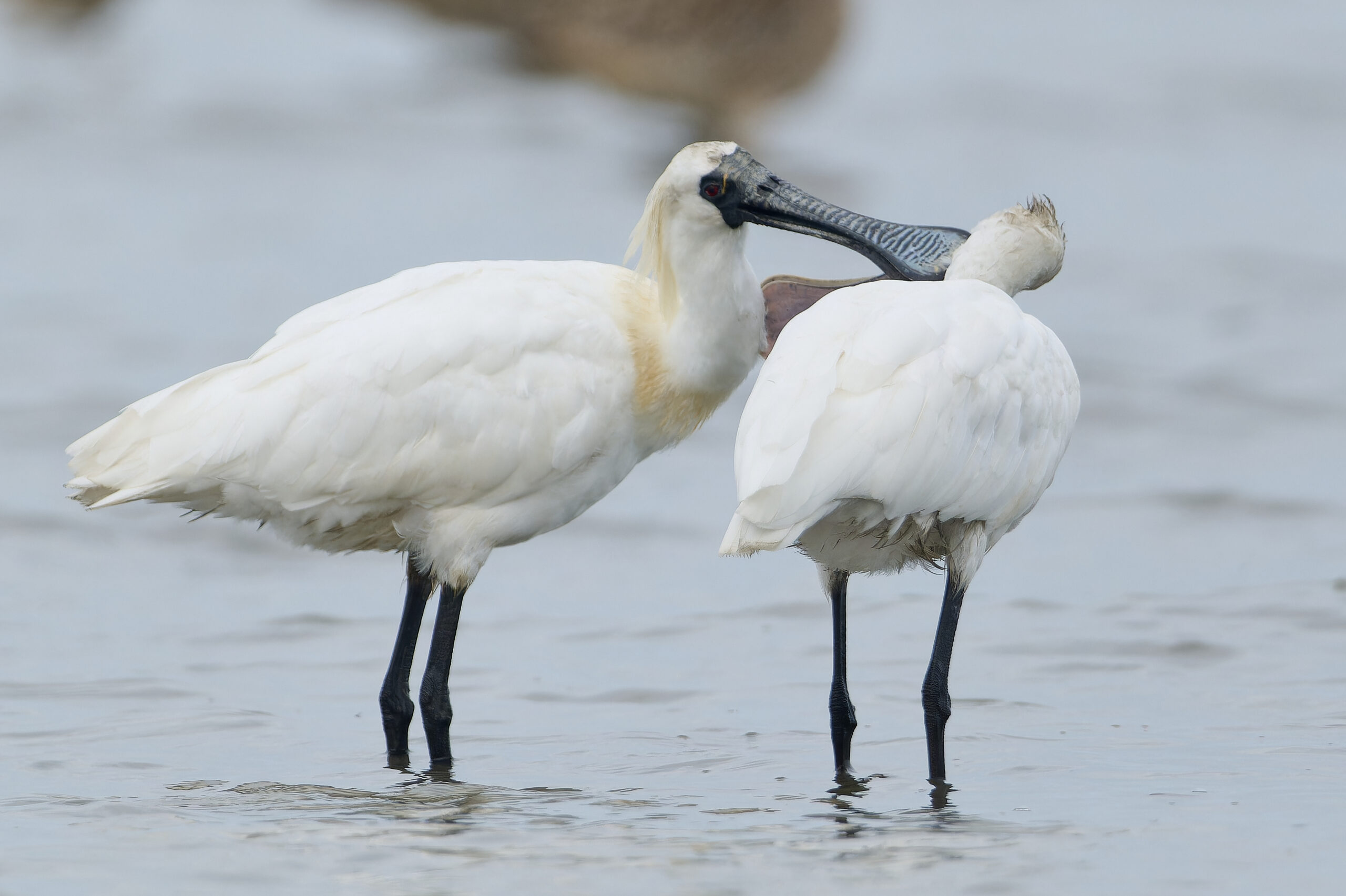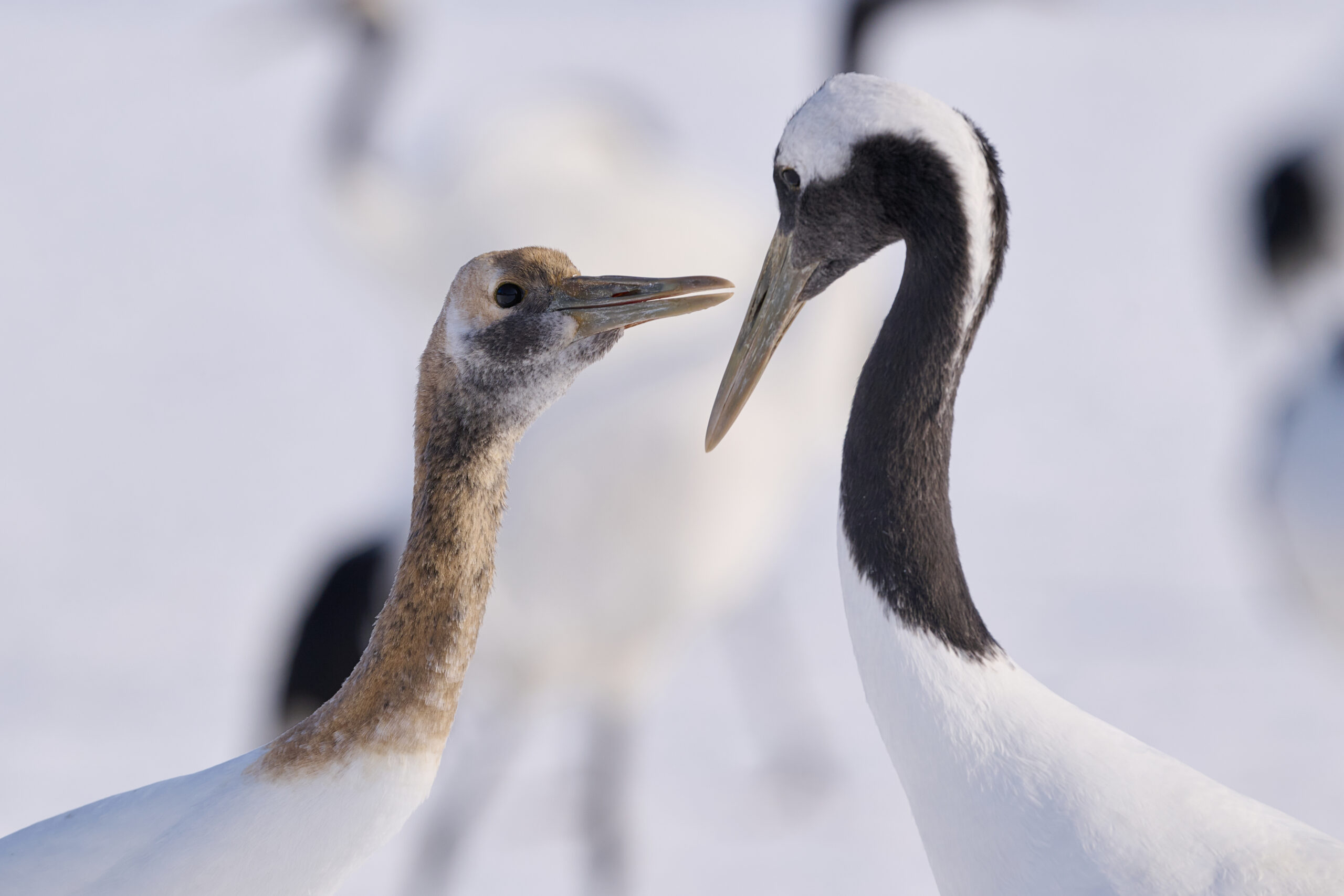
Nemuro in Fogs
This is the first time to visit Kushiro without snow. However, this is the second time for me to visit Kushiro. And instead of snow, it was raining. I woke up at 4:00 a.m. to took a plane all the way here for photo-shooting, but it was raining. The weather forecast called for cloudy skies, but it rained. The weather was relentless. But I didn’t care. Cloudy skies make the surface of the water reflect white, and rain makes the scenery sparkle. It should. This time, I went to Furen Lake, a Ramsar Convention-listed wetland, and boarded a Ochishi Nature Cruise, which sells etopilica observation, to take pictures of waterfowl.
It takes two hours from Kushiro Airport to Nemuro by car. I rented a car at the airport and headed for Nemuro on Route 44. On the way to Nemuro, I went to the Yamato Transport Delivery Center to pick up the bear repellent spray that was sent from home. Since I could not bring it on board the plane, I sent it by land beforehand. It seems that bear repellent spray can be purchased at home centers in Hokkaido, but since this trip was only two days and one night, this was the way to save time. There have been many reports of bear sightings in Hokkaido recently. They have also been seen wandering around Sapporo City. We are no match for a wild animal that has chosen brawn as its survival strategy. In fact, we cannot win against various creatures with empty hands. Not even a cat. If I meet a hungry brown bear, my destination will end up in the his stomach. This pepper spray is the pickaxe that will help me overcome the obstacles and get to the right destination.
The journey from Kushiro to Nemuro gradually takes you into nature. After passing through Kushiro city center, grasslands and trees increase in number, and cows and horses on farms come into view. Red-crowned Cranes can be seen along the roadside, white-tailed sea eagles in the sky, and Nemuro is getting closer. The rain has stopped, and the surrounding area is shrouded in fog.
After checking the bird watching points at the Nature Center, it takes about five minutes to reach Shunkunitai. It is part of Furenko, a Ramsar Convention wetland, and is a vast peninsula made of sandbars. A white-tailed sea eagle stands like a gatekeeper on a wooden post haphazardly erected beside the parking lot. I park the car and set up the camera. Because Shunkunitai faces the seaside, the wind is strong. The temperature is about 15 degrees Celsius in June. The cold wind further lowers the real-feel temperature.I put on hardshells and enter Shunkunitai.
A forest of red pine trees rises at the end of a vast island made of sandbars. The sense of desperation created by the standing dead red pines is aided by the mist after the rain, which creates a fantastic atmosphere. The air becomes even more mysterious and thick as you walk along the wooden path into the red pine forest. The air becomes even more mysterious and thick as enters the forest of red pines, where many standing red pines are surrounded by a dense and dark forest, and some red pines have literally collapsed from the roots. The forest as it is is a combination of fragility and strength, sublimated into beauty. The atmosphere created by Shunkoku-tai was breathtaking.
Incidentally, although it is supposed to be a sacred place for bird watching, there were only white-tailed eagles and larks. As is the case with many places in the eastern part of Hokkaido, winter is the best time to see birds here.
Boarding time for the Otoishi Nature Cruise is at 10:00 a.m. We gather 30 minutes before the cruise, pay the boarding fee, and get ready for the cruise. The guide advised us to bring a towel to protect our camera from splashing water. When the boat sets sail, I’m first struck by the force of the waves. The boat was going up and down repeatedly. The radio receiver distributed to us announces, “The waves are calm today, so it will be easy to take pictures. I see. To be clear, it is quite difficult to take pictures. On top of focusing, the subject would be out of view in the viewfinder amidst the up and down waves. However, the people who have also been on board seem lightly to tackle such things. In other words, I was just inexperienced.
The boat heads for Yuluri Island, the only nesting site of etopilika in Japan. On the way, a variety of waterfowl can be observed. Just as I was able to confirm, I saw a sea crow, a wagtail, a keimafuri, a black-faced albatross, and an etorofu murrelet resting or flying around on the water.
In the misty sea, an island towering mysteriously comes into view. Surrounded by steep cliffs, the island is currently uninhabited. It is said that fishermen once lived on the island, and the horses that grazed on the island at that time are now wild and roaming around. Next to Yuluri Island is a smaller island of the same shape called Moyuluri Island. Both islands are said to be home to a variety of nesting birds, not only etopilicas. In particular, there are many nesting seagulls, and when looking at the island from the boat, you can sometimes see quite a few seagulls flying away from the island. According to the guide, the reason why the gulls fly away all at once like that is because of the approach of white-tailed eagles, and the number of white-tailed eagles on the island is increasing, while the number of gulls is decreasing. Yuluri Island is a natural monument where landing is prohibited, but people sometimes enter for research purposes under approval. In such cases, they use ladders to climb the cliffs.
Sea otters could also be seen around Moyururi Island. They are an endangered species. Some appeared to be parent and child, while others were swimming alone and constantly checking on us. According to the captain, they are the “natural enemy of fishermen” because it eats only high quality food. The boat went around Yuluri Island and Moyuluri Island in search of adult Etopirika. On the way, we saw an adult flying straight out to sea, and under the insistence of the guide, the boat waited a little longer. However, it did not return. Unfortunately, we could not confirm the adult Etopirica this time, and only the young bird without decorative feathers could be seen.
Due to various conditions, I was not able to take many pictures this time. However, the misty atmosphere of Nemuro at this time of year was truly wonderful. Next time, I will take some time to take more detailed photos. I plan to visit East Hokkaido several times this winter, and am expecting the air will be different from the fog.

